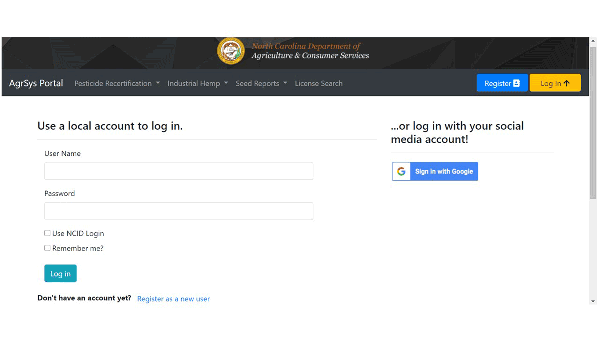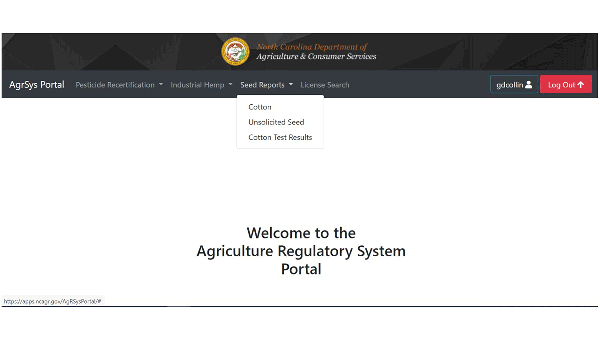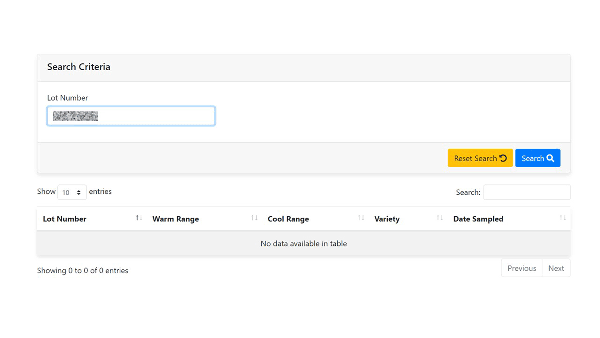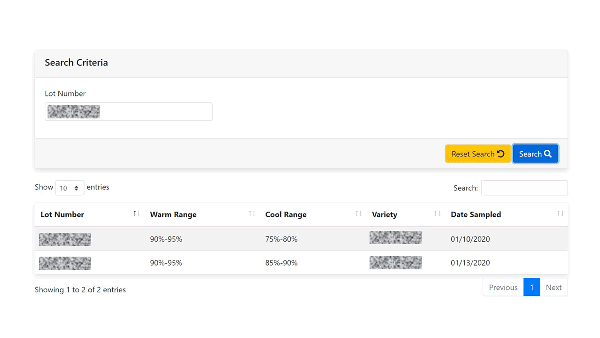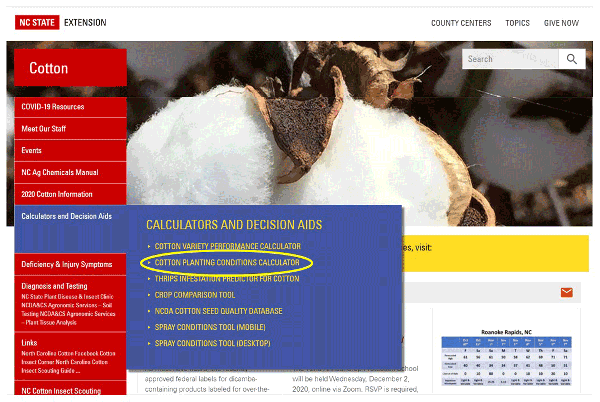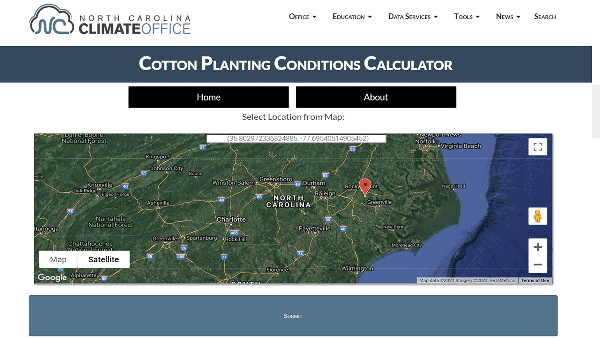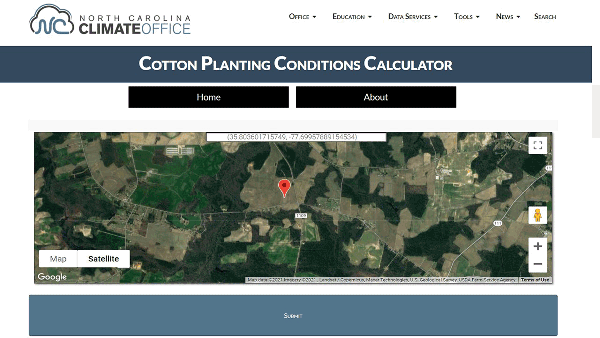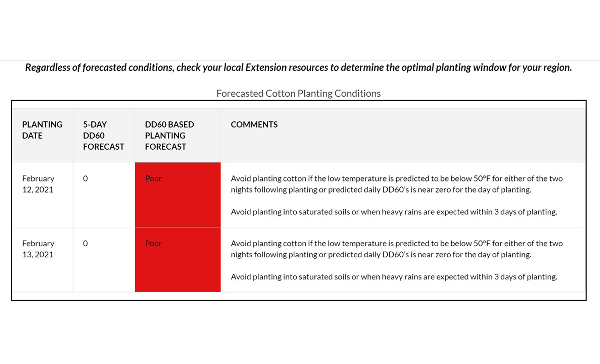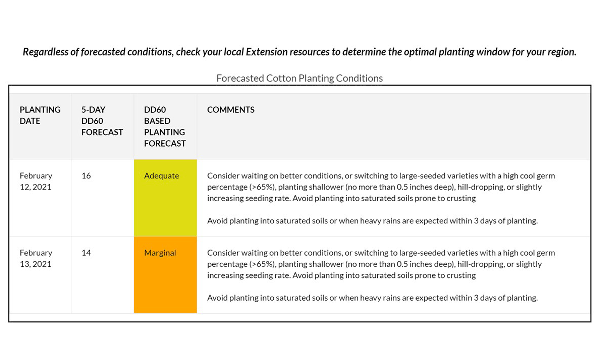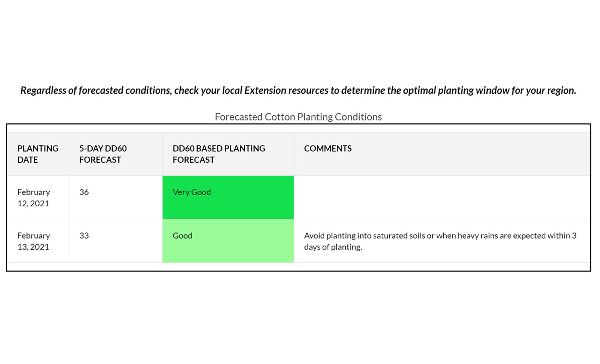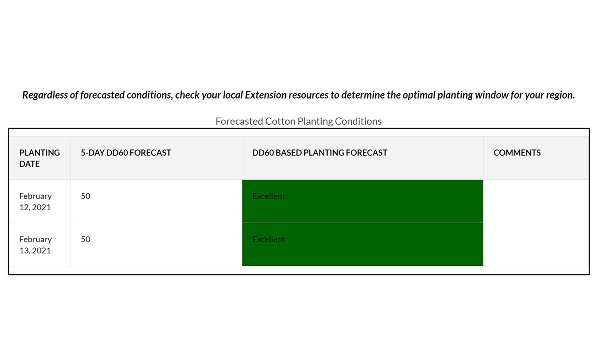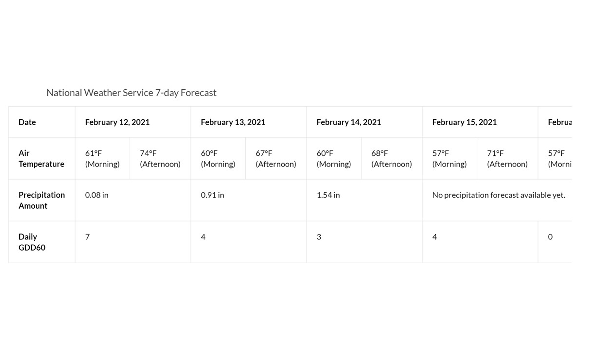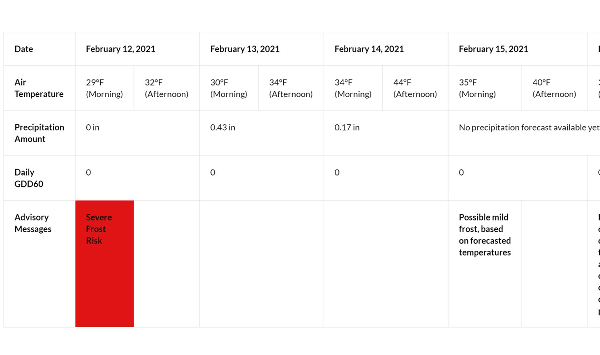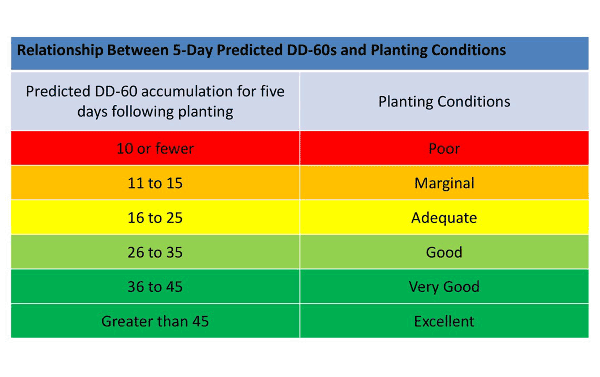The North Carolina Department of Agriculture and Consumer Services (NCDA&CS) Cotton Seed Quality Testing Program, launched in 2020, has gained momentum, which is expected to continue in the near future. This program has had a significant impact on the North Carolina cotton industry because it provides a third party evaluation of seed quality that is needed for educated planting decisions. The NCDA&CS Cotton Seed Quality Database was developed as part of this program. In this database, growers can access the results of both warm and cool germ tests conducted by NCDA&CS.
The North Carolina State University Cotton Planting Conditions Calculator, launched in 2019, is a real-time platform that growers can use to make educated planting decisions that consider weather forecasts. Collectively, the database and the calculator enable growers to utilize both seed quality and weather forecasts to make the best possible planting decisions. The intent of this publication is to demonstrate how growers can access and use these tools effectively.
The NCDA&CS Cotton Seed Quality Database
The NCDA&CS Cotton Seed Quality Database can be accessed on the NC State Cotton Extension Portal under the header of “Calculators and Decision Aids” on the left-side toolbar as seen in Figure 1.
When accessing the NCDA&CS Cotton Seed Quality Database, the first step is creating your username and password (Figure 2). Please remember to record your login information so that you can access the database quickly as planting season approaches.
After you have logged in, locate the “Seed Reports” tab in the top toolbar. In the drop-down menu, click on the downward triangle to open the drop down menu and then select “Cotton Test Results”—do NOT select “Cotton” (Figure 3).
At this point, enter your lot numbers exactly as printed on the bag. See Figure 4.
Simply click the blue “Search” button on the far right, and the database will list the test results for that lot number, and the date sampled (Figure 5). The database may also indicate when a sample has been collected and a test is underway, or when the lot number was not found.
If your lot number could not be found, contact Brian Bowers at NCDA&CS (919-707-3756). If access to technology is a challenge for you, please contact your local Extension agent for assistance.
The NC State Cotton Planting Conditions Calculator
The warm and cool germ range listed for your cotton seed in the NCDA&CS Cotton Seed Quality Database can then be used to make planting decisions by utilizing the NC State Cotton Planting Conditions Calculator. The NC State Cotton Planting Conditions Calculator can also be accessed on the NC State Cotton Extension Portal, under the header of “Calculators and Decision Aids” on the left-side toolbar. (See Figure 6).
The calculator is simple to use and is a real-time resource that utilizes National Weather Service forecasts to develop a five-day Degree Day-60 forecast. (A Degree Day-60 compares the average of the high and low temperatures to 60ºF.) The calculator also develops a color-coded rating and advisory for planting cotton, for the day of use, as well as for the following day, at any given time.
Forecasts can be unreliable during the spring, and they often change within a short time. Any changes that occur within the National Weather Service forecasts will be reflected in the NC State Cotton Planting Conditions Calculator. Growers are advised to regularly check the calculator’s advisory for planting cotton every day (both morning and evening) during the planting season. This is especially important when conditions are less than ideal, or if the predicted heat unit forecast is close to qualifying for a different rating category. Rating categories can be found by scrolling to the bottom of the results page.
To use this calculator, click on your location on the interactive map (Figure 7).
As shown in Figure 8, users can zoom into the map to locate a particular farm or field, for which the forecast and planting rating/advisory will then be generated.
Then, simply click on the “Submit” button on the bottom of the map, and the calculator will generate the planting forecast, planting rating, and advisory comments, as shown in Figure 9. The advisory comments offer suggestions for avoiding planting in certain weather conditions.
In this scenario (Figure 9), when planting conditions are rated as “poor” and little or no Degree Days-60 are predicted within the five-day period of planting, cotton planting is NOT advised, regardless of seed quality. This may also be the case if any nighttime temperature is expected to approach 50ºF or lower within the first three days of planting, as seen in the advisory comments, regardless of the planting rating.
Depending on the seed size and seed quality (warm and cool germ results from the NCDA&CS Cotton Seed Quality Database), cotton could be planted in “marginal” or “adequate” conditions. However, it may be wise to discontinue planting during these periods, unless it is late in the planting season and a significant proportion of acreage remains to be planted before crop insurance deadlines. In general, large acreage producers who farm over a broad geography are most likely to be the producers who have to plant in suboptimal planting conditions. If so, the producer should plant only higher-quality seed, especially with cool germ, and preferably, plant at a more shallow depth with larger-seeded varieties and adjustments made to the seeding rate. For example, a seed lot with a warm germ of 85% and a cool germ of 65% should be planted at a 20% higher seeding rate to achieve the number of plants per acre (stand) similar to the same lot planted under warmer or more ideal conditions. Another seed lot with the same or similar warm germ, and a 45% cool germ should not be planted during these periods. This is especially true for smaller seed, deep planting, or low seeding rates.
As shown in Figure 10, when conditions are rated as “adequate” or “marginal,” there may be warnings triggered by weather conditions that will appear in the comments or advisory section. These may include a forecast for “packing rains” (30% chance or more of receiving 1 inch of rain or more) during the five-day period in question.
If the warm germ is good or acceptable, any seed lot can be planted during “good” or “excellent” planting conditions, as illustrated in Figure 11.
If the calculator predicts “good” or “excellent” conditions, pay close attention to the comments in the advisory, just in case heavy rains or a cool night or two are expected during the five-day period in question. For example, a warning for a packing rain in the comments may lead a grower to avoid deep planting of smaller seed, especially in fields with a history of crusting, despite the seed having a good warm germ. Growers may also want to consider hill dropping seed if packing rains are expected, especially in fields with a history of crusting. Hill dropping involves placing two to six seeds in a group or hill at a desired interval in between hills.
If “excellent” or “good” ratings appear (Figure 12), growers should focus primarily on warm germ, because cool germ does not pertain to these conditions.
After the planting conditions table is observed, users can scroll down the same page to observe the daily high and low temperatures, daily Degree Day-60 predictions, and the chance of rain, as seen in Figure 13.
The NC State Cotton Planting Conditions Calculator can also be utilized in the fall, during harvest, to determine if there is a risk of a mild frost, severe frost, or cool conditions that may lead to a freeze risk. (See Figure 14). The frost predictions consider a range of weather conditions such as night-time low temperatures, wind speed, and chances of precipitation during the pre-dawn hours. Since subtle changes in the forecast could drastically change the likelihood or severity of a frost, growers are advised to check the calculator twice daily during the defoliation and harvest seasons, and to make defoliation timing decisions for late-planted or late-maturing cotton.
Finally, as shown in Figure 15, a user can scroll down to the bottom of this same page to see the rating chart for each color-coded rating for planting conditions. This will help producers determine the risks of planting during certain periods, and to adjust planting practices as conditions warrant.
Growers with little or no access to sufficient Internet services are welcome to contact their local Extension agents, who are well-versed in using this calculator and can provide sound advice for planting that considers both forecasted conditions and seed quality.
Publication date: May 31, 2022
AG-924
N.C. Cooperative Extension prohibits discrimination and harassment regardless of age, color, disability, family and marital status, gender identity, national origin, political beliefs, race, religion, sex (including pregnancy), sexual orientation and veteran status.


